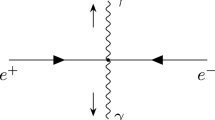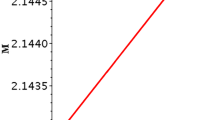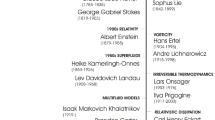Abstract
A classical model of the spinning electron in general relativity consisting of a rotating charge distribution with Poincaré stresses is set up. It is made out of a continuous superposition of thin charged shells with differential rotation. Each elementary shell is maintained in stationary equilibrium in the gravitational field created by the others. A class of interior solutions of the Kerr-Newman field is thus obtained. The corresponding stress-energy tensor naturally splits into the sum of two terms. The first one is the Maxwell tensor associated to a rotating charge distribution, and the second one corresponds to a material source having zero energy density everywhere, no radial pressure, and an isotropic transverse stress. These negative pressures or tensions are identified with the cohesive forces introduced by Poincaré to stabilize the Lorentz electron model. They are shown to be the source of a negative gravitational mass density and thereby of the violation of the energy conditions inside the electron.
Similar content being viewed by others
References
Gautreau, R. (1985).Phys. Rev. D 31, 1860.
Tiwari, R. N., Rao, J. R., and Kanakamedala, R. R. (1984).Phys. Rev. D 30, 489.
Grøn, Ø. (1985).Phys. Rev. D 31, 2129.
Poincaré, H. (1905).Comptes Rend. Acad. Sci. (Paris) 140, 1504;id. (1906).Rend. Circ. Mat. Palermo 21, 129.
Lorentz, H. A. (1904).Proc. Amsterdam Acad. Sci. 6, 809.
Tartaglia, A., and Agnello, M. (1986).Nuovo Cimento 95B, 55.
Tolman, R. C. (1930).Phys. Rev. 35, 875; Whittaker, E. T. (1935).Proc. Roy. Soc. Land. A149, 384.
Newman, E. T., et al. (1965).J. Math. Phys. 6, 918.
López, C. A. (1984).Phys. Rev. D 30, 313.
Boyer, R. H., and Lindquist, R. W. (1967).J. Math. Phys. 8, 265.
López, C. A. (1990).Gen. Rel. Grav. 22, 827.
Florides, P. S. (1977).Nuovo Cimento 42A, 343.
Grøn, Ø. (1988).Gen. Rel. Grav. 20, 123.
Landau, L. D., and Lifshitz, E. M. (1975).The Classical Theory of Fields (Pergamon, New York).
Hawking, S. W., and Ellis, G. F. R. (1973).The Large Scale Structure of Space-Time (Cambridge University Press, Cambridge).
Wald, R. M. (1984).General Relativity (University of Chicago Press, Chicago).
Ipser, J., and Sikivie, P. (1983).Phys. Rev. D 30, 712; López, C. A. (1988).Phys. Rev. D38, 3662.
Guth, A. (1981).Phys. Rev. D 23, 347.
Morris, M. S., Thorne, K. S. and Yurtsever, U. (1988).Phys. Rev. Lett. 61, 1446.
Author information
Authors and Affiliations
Rights and permissions
About this article
Cite this article
López, C.A. Internal structure of a classical spinning electron. Gen Relat Gravit 24, 285–296 (1992). https://doi.org/10.1007/BF00760230
Received:
Issue Date:
DOI: https://doi.org/10.1007/BF00760230




